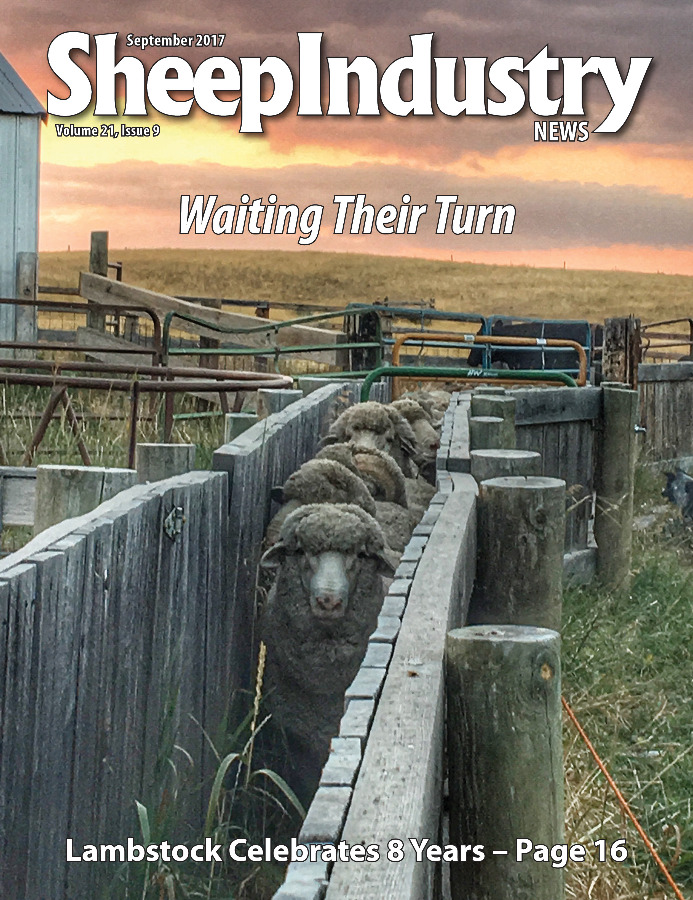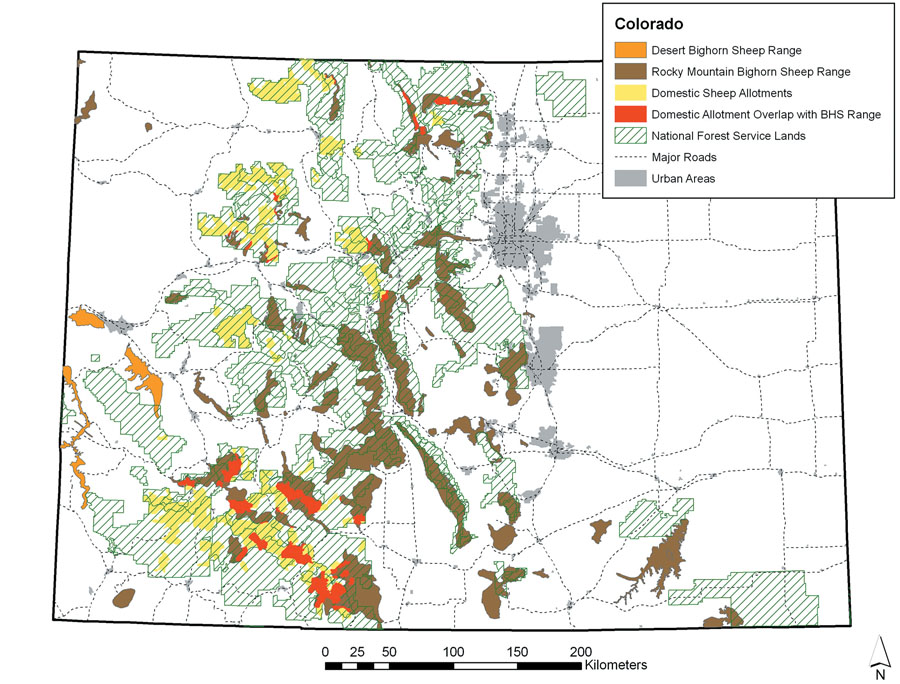
- September 2017
- President’s Notes
- AmericanWool.org Launches
- Priority 1: Parasite Resistance
- Lambstock 2017
- Kopanke Earns Scholarship
- Clements Perseveres in South Dakota
- Court Upholds Wyoming Grazing
- Industry Impact Study Available
- Committee Discusses H-2A
- Executive Board Meets in Park City
- Market Report
- The Last Word
Court Upholds Wyoming Grazing
CHASE ADAMS
ASI Senior Policy & Information Director
In a decision released in late July, the U.S. District Court for the District of Wyoming released the opinion by Judge Alan B. Johnson upholding the portion of the Medicine Bow National Forest Plan that gave preference to domestic sheep allotments within the Encampment River herd of bighorn sheep.
The decision in Biodiversity Conservation Alliance v. Jiron holds that the “viability mandate” required by the National Forest Management Act does not require the forest to be managed in order to maintain the maximum number of each species in every part of the forest, but rather gives the U.S. Forest Service flexibility to provide species viability through the entire forest.
 In December 2002, the Forest Service published their Draft Environmental Impact Statement for the Medicine Bow National Forest as part of their Forest Management Plan. The statement included efforts to manage a number of bighorn sheep herds across several mountain ranges within the Medicine Bow and assigned each herd a management priority score. Specifically, the statement found that the Encampment River herd was a Priority 3 herd, warranting no habitat work.
In December 2002, the Forest Service published their Draft Environmental Impact Statement for the Medicine Bow National Forest as part of their Forest Management Plan. The statement included efforts to manage a number of bighorn sheep herds across several mountain ranges within the Medicine Bow and assigned each herd a management priority score. Specifically, the statement found that the Encampment River herd was a Priority 3 herd, warranting no habitat work.
The petitioners in this matter, the Biodiversity Conservation Alliance, commented and appealed the decision of the Forest Service. At issue was whether “species viability” under the National Forest Management Act required the agency to manage each bighorn herd individually for maximum viability or gave the agency the discretion to manage the forest as a whole to assure multiple-use. The State of Wyoming and the Wyoming Wool Growers Association joined the case as intervenors.
“The conclusion reached by the Court supports the Wyoming Wool Growers and American Sheep Industry Associations’ understanding of the viability mandate in the Forest Planning Rule,” said Amy Hendrickson, executive director for the Wyoming Wool Growers Association. “That is that the forest can be managed as a whole to provide for viable species and fauna while also multiple-use. It is unfortunate, however, that this case referenced outdated and flawed science, and the often exaggerated concerns over contact between wild and domestic sheep. We’ve learned so much since this case was taken up. One example is that these pathogens are often endemic in bighorn sheep herds.”
Since the case was first brought to the district court, scientific research, largely conducted through the U.S. Sheep Experiment Station, has changed the focus on pathogen caused infection from Pasteurella-haemolytica to mycoplasma ovipneumoniae (movi) which has been found to be endemic in a number of bighorn sheep herds across the west, even where there has been no interaction between domestic and wild sheep populations.
“The ruling supports the Wyoming plan,” added Hendrickson, referring to the Wyoming Bighorn Sheep-Domestic Sheep Interaction Working Group recommendations that were put into place in 2004 and are known as the Wyoming Plan. “But we are disappointed that more weight was not given to the principle that the State of Wyoming is in charge of managing the wildlife within its borders.”
In reviewing the case, Judge Johnson found that “viability” in the statute was ambiguous and therefore deferred to the agency’s interpretation of the term in carrying out the regulation. The result of this decision gives the Forest Service and the administration greater flexibility in drafting and implementing Forest Management Plans to manage the forest as a whole for viable species populations, not every possible individual range within that management area.
The fact that the Encampment Range was surrounded and overlapped by all or parts of seven domestic sheep allotments demonstrated that certain ranges within a management plan can be managed for multiple-use, including domestic sheep, while still maintaining overall species viability.

